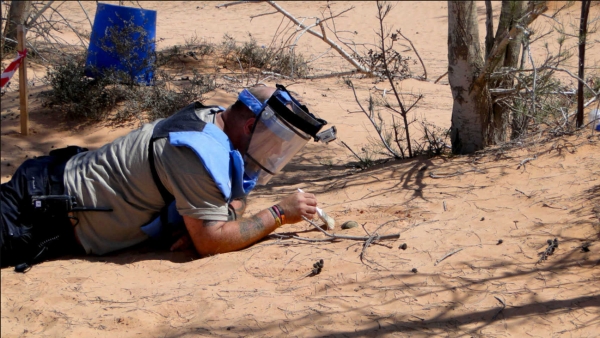As of late May 2020, Human Rights Watch has been on high alert as they have reported that armed groups within Libyan territory, have been actively responsible for the implementation and detonation of landmines. Their prime intent with these actions is gaining ground in capturing Tripoli, the Libyan capital.The last few months have been marked by violent confrontations between the Libyan Arab Armed Forces (LAAF), and the internationally recognized Government of National Accord (GNA) based in Tripoli. The detonation of these explosives is said to be a result of the LAAF’s Commander Khalifa Haftar, ordering his troops to scatter the landmines before they left the southern districts of the capital.
The United Nations Support Mission in Libya (UNSMIL) reported that the Tripolitan districts of Ain Zara and Salahuddin, were the most affected areas of the explosions. Amongst the wounded and dead, were two men known by the names of Zakaria Al Jamal and Muhammed Daleh. The former died while he was visiting his family’s residence in Salahuddin, while the latter was killed on May 25th by one of the explosions as he and his brother tried to deactivate the landmines. His brother did not perish but was significantly injured. There is growing concern that these strategically placed explosives have been manufactured in Russia. The GNA claims that the “Wagner Mercenaries,” a Kremlin funded military group, is supporting the LAAF by scattering the explosive devices. The types of landmines being discovered are “MON-50”,“POM-2”, and “PMN-2.” All these landmines are of Russian origin, which proves that they have been tactically transferred to Libya relatively recently. A troublesome factor is that Libya is not part of the Mine Ban Treaty, an agreement enforced in 164 countries. Before Muammar al Ghaddafi’s death, his regime purchased millions of landmines, but after his downfall these weapons ended up in the hands of anti-government fighters in 2011. Current Libyan civilian casualties have reached a total of 3,552 according to the Landmine Monitor, meanwhile confrontation between the LAAF and GNA is not expected to de-escalate.
Countries like Russia, Jordan, United Arab Emirates, (UAE) and Syria are contributing to the perpetration of violence by providing military support to the LAAF. As a response, Steve Goose, the Arms Division Director at Human Rights Watch and Chair of the International Campaign to Ban Landmines, condemned the events happening in Libya. He deemed unconscionable any use of internationally banned landmines. He also pressured the GNA to assist the hurt civilians and pleaded those responsible to halt the use of those devices as a strategy in the inner fighting. He warned that if no action is taken immediately, the loss of life and the chaos would carry on indefinitely.
To read more, please visit:
https://www.hrw.org/news/2020/06/03/libya-landmines-left-after-armed-group-withdraws
https://www.aa.com.tr/en/middle-east/libya-25-killed-clearing-haftars-landmines/1864293
https://www.hi-us.org/libya_hazardous_landmines
Author: Sergio Gomez







